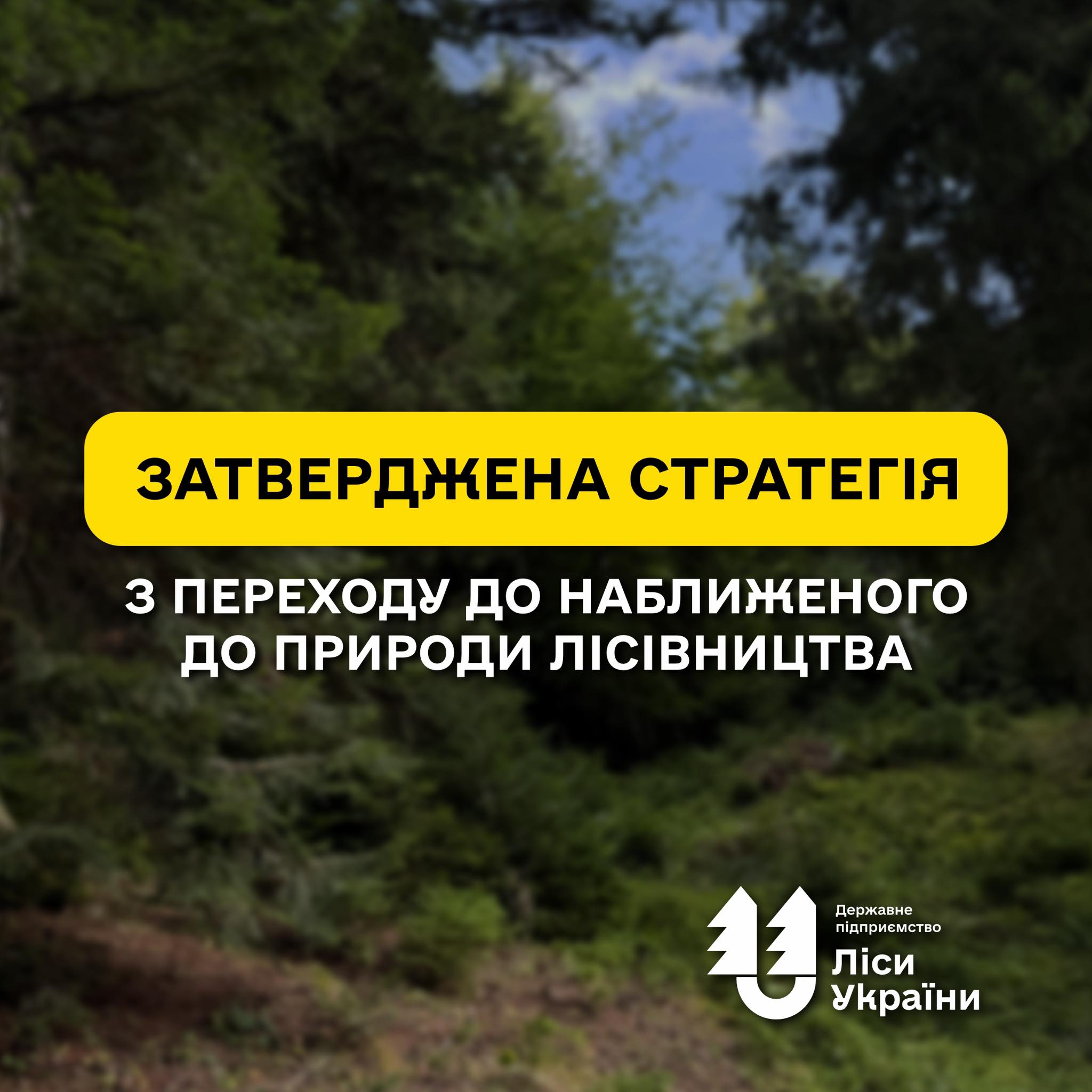The Ukrainian forestry is facing many challenges today.
We have inherited excessive economic impact, which has led to the prevalence of monocultures, reduced climate resilience, and loss of biodiversity.
Climate change in recent decades has led to an increase in droughts, storms, pest infestations and forest diseases. Society’s demands to maintain a balance between environmental and economic components. These and other factors are forcing the company to rethink traditional forest management methods, use the experience of European foresters and accelerate the transition to natural forestry.
The introduction of modern practices is facilitated, among other things, by the ban on clear-cutting in the mountain forests of the Carpathian region (effective from 2027).
Transformation is a complex and lengthy process, so to implement it, the State Enterprise “Forests of Ukraine” has developed the Strategy of close to nature forestry.
Leading scientists from NULES, NTLU, Ukrderzhlisproekt, Forza Agency for Sustainable Development of the Carpathian Region, the Forest Resources Department and the Forest Training Centre branch of the SE “Forests of Ukraine” participated in the development of the document. The work was led by the employees of the Development and IT Department of the State Enterprise “Forests of Ukraine”.
The strategy takes into account the experience of European partners, in particular Slovakia, Germany and Switzerland, as Ukraine has set out to harmonise forestry with EU approaches.
The main directions of implementation of the strategy for close-to-nature forestry (CNF):
1. Adaptation of the forest management system to the natural and climatic conditions of each forest growing region.
2. Identification of forest areas where CNF will be applied. Scientists conduct a detailed study of the state of forest ecosystems.
3. Development of new rules that will determine how and with what intensity to carry out measures to restore and re-form forests
4. Implementation of the methods of plot forest management planning. They consist in the formation of permanent management plots, geographically united by common forest vegetation conditions and a certain set of designated forestry measures. This will allow for the formation of highly productive sustainable plantations that maximise the use of soil resources.
5. Abandoning clear-cutting of the main forests in favour of selective and gradual felling. This will ensure the continuity of forest cover, preserve biodiversity and increase forest resilience.
6. Restoration of the natural structure of forests, namely: natural regeneration of stands, formation of multi-age multi-tiered plantations; restoration of autochthonous tree species (growing since ancient times in the area).
7. Maintaining a balance in forest management between environmental, economic and social objectives so that development is sustainable and beneficial to all.
8. Changing approaches to reforestation – using local planting material with a closed root system, creating mixed forests instead of monocultures.
9. Strengthening scientific support and monitoring in forests (using international standards FSC and PEFC to assess the effectiveness of each step).
10. Retraining of personnel. To train taxators, foresters, forest masters, engineers and managers, marteloscope plots are being established in different forest vegetation zones and forest types, and permanent training centres are being established in the regions (more than 200 foresters of the Carpathian branch have already completed the training programme on close-to-nature forestry and passed the exams, and the educational programme will be continued in other regions).
11. Technological support of the SFM processes:
✔️ expansion of the forest road network with a density of up to 10 km per 1000 ha;
✔️ increase of modern logging equipment – harvesters and forwarders. This equipment helps to ensure the proper formation of young plantations. In the long run, this will result in a climate-resilient stand of trees.
The strategy envisages that by 2030, close-to-nature forestry will be applied in 20% of forests.

